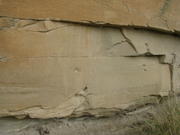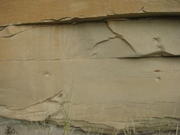22 July 2008
Alan Hinks, who has died aged 80, ran the shipbuilding firm J Hinks & Co of Appledore, Devon, which built replicas of historic ships using traditional techniques.
When first asked in the mid-1960s to work on a full-scale model of the ketch
Nonsuch, which had sailed from Gravesend for Hudson's Bay in 1668, Hinks had a lifelong enthusiasm but no experience of building ships with square-rigged masts, ornate woodwork and crows' nests.
However he and his wife Audrey took it as a good omen when their black cat Trouvé came and sat on their plans as they studied them on the floor of their sitting room. There was an initial problem in that, at 54ft without the bowsprit, the new Nonsuch was too long to be built at the firm's cramped premises, and planning permission had to be obtained to fit out a bigger yard on the site of Appledore's old gasworks.
For the next 11 months some 33 workers, including apprentices and older hands brought out of retirement, employed such traditional tools as the adze (for smoothing timbers) and the pane maul (a double-headed hammer).
A special machine was lent by the Maritime Museum at Greenwich to fashion some 3,000 trenails (or trunnels – wooden pegs to attach the planking to the frames). Retired shipwrights then helped to caulk the seams in the oak hull, and riggers worked on the sails while all the ironwork required was made in the yard or locally.
When an estimated 37,000 people arrived to watch the vessel being launched in August 1968, it was "not bad for a village of 4,000," as Audrey Hinks observed.
Alan Hinks was confident that the ship could cross the Atlantic. But since the original
Nonsuch had been the only one of six vessels to complete the voyage, it was decided to transport the replica ship as deck cargo to Halifax, Nova Scotia.
After being reassembled, it sailed down the St Lawrence river and through the Great Lakes before finally being laid up at the Manitoba Museum in Winnipeg, where the Hudson Bay Company had traded for furs under the nickname "Here Before Christ".
But while some of his workers travelled with the ship Hinks soon found himself engaged on constructing a model of
Golden Hinde, in which Sir Francis Drake circumnavigated the globe before returning home to be knighted on board by Queen Elizabeth I....
The keel of
Golden Hinde, commissioned by a San Francisco corporation as a fully-working museum ship for educational purposes, was laid in 1971. Some 102ft long, with five decks, 22 cannon and carrying 4,000 sq ft of sail, she circumnavigated the globe before being permanently berthed as an attraction at St Mary Overie Dock, Bankside in London.
Hinks's third replica, launched in 1975, was
Valkyrja, a copy of an elegant 76ft Viking longship, which had been found in Oslo; it was ordered for the Thorpe Park leisure complex in Surrey. His final replica, built in 1976, was the 70ft
Britannica, a 24-oar Roman galley with a fearsome eye at the front, which also went to Thorpe Park.
Building wooden craft to full seaworthy standards demanded careful selection of the raw materials: oak, mahogany, larch, and later iroko. On one occasion Hinks found the wood so faulty that he had [to] start construction again....
Alan Hinks decided, while in hospital, to attend the 40th anniversary reunion of
Nonsuch crew members in Winnipeg; but he died two days later, on May 4.






















